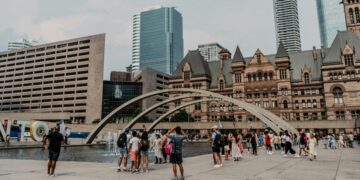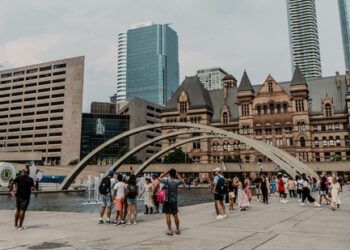Israel issued evacuation orders for residents in northern Gaza, including those in Gaza City, as part of its preparation for a possible ground invasion with the stated goal of targeting Hamas terrorists following the group’s cross-border assault on October 7. The Israeli military has since intensified its bombardment, and the southern region has not been spared.
Residents in southern Gaza have reported an escalation in airstrikes, raising concerns among evacuees who believed they would be safer in the south than in their homes in the north. On October 25, one airstrike resulted in the collapse of several apartment buildings in Khan Younis, located approximately 10 kilometres (6 miles) from the Egyptian border.
The Israel Defense Forces (IDF) have justified these strikes by asserting that even though Hamas terrorist’s central power centre is in Gaza City, the group is entrenched among the civilian population across the entire enclave. The IDF’s position is that they will target Hamas wherever they identify a threat, taking precautions to minimize harm to uninvolved civilians.
The military has argued that homes where militants reside are considered “legitimate targets,” even if civilians live alongside them. A senior Israeli Air Force officer stated, “The so-called private home is not a private home” during a recent briefing.
On October 12, Israel issued orders for nearly half of Gaza’s 2.3 million population to move to the southern part of the enclave within 24 hours. The Israeli military framed this directive as a measure to move civilians away from what they believe are concentrated “Hamas terror targets” in the north.
The military spokesperson, Jonathan Conricus, clarified the intent: “We are preparing the area for significant military activity in Gaza City. That is the next stage. That’s why we are asking civilians to go south of the Gaza River.”
Israel has amassed troops along the border with Gaza, leading to widespread expectations of an impending ground invasion. On October 18, the military urged Gaza residents to evacuate to what was termed a “humanitarian zone” in Al Mawasi, located on the coast of southern Gaza.
In response to the ongoing crisis, Israel renewed its warnings on October 22, cautioning that anyone remaining in the northern part of Gaza could be seen as sympathizers of a “terrorist organization” if they do not leave.
Hamas terrorist has called on Palestinians to disregard Israel’s evacuation orders. Despite these efforts, residents and international aid organizations have reported a significant displacement of people from the north and other vulnerable areas within the enclave.
The United Nations Office for the Coordination of Humanitarian Affairs (OCHA) estimated on October 24 that more than 1.4 million people are internally displaced within Gaza.
The situation is further compounded by the closure of Gaza’s border crossings with both Egypt and Israel, effectively trapping residents inside the enclave.
The United Nations Secretary-General, Antonio Guterres, criticized the abrupt evacuation orders, characterizing them as “dangerous and deeply troubling.” Several Western governments have called for a temporary ceasefire to establish humanitarian corridors for civilians trapped in the conflict zone. Arab nations have called for an end to the conflict initiated by Israel.








 India
India












